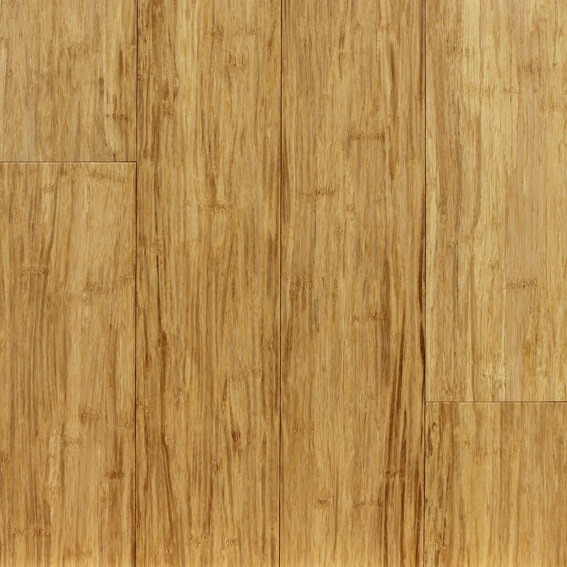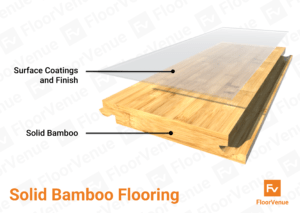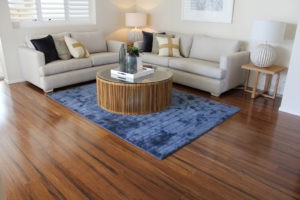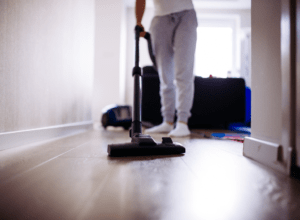

04 Aug How to Clean & Maintain Bamboo Flooring
When it comes to bamboo flooring, there are multiple factors to consider – abrasiveness of tools, the amount of water and harshness of chemical cleaners to name a few. Whilst it may seem complicated, this guide will help break them down into small steps so cleaning can be an easy breeze. Furthermore, we’ve provided 3 pro tips to prevent damage or unnecessary dirt accumulation.
What are Bamboo Floors?
Bamboo floors are boards made by shredding a type of grass (bamboo) and compressing these fibres together at high temperatures. An adhesive is used to help them bind to each other. With this design, bamboo floors are made harder and more durable than timber floors. Because bamboo grows in abundance and faster than trees, they are more affordable and environmentally friendly in comparison to timber floors. You can learn more about bamboo floors in our complete guide.
The three common types of bamboo floors include:
- Water-Resistant Bamboo Flooring – Uses a surface of real bamboo bonded to a waterproof base, making it the strongest and most water-resistant bamboo flooring.
- Strand woven Bamboo Flooring – mixes the grass in an interlocked manner, giving it a tougher surface than other bamboo floors.
- Horizontal & Vertical Bamboo Flooring – refer to the bamboo flooring being glued together horizontally or vertically. This is an older and discontinued line of bamboo floors.


Qualities of Bamboo flooring:
Pros:
- Real Natural Bamboo
- Stronger than Hardwood Floors
- Middle Range Pricing
- Eco Friendly
- Floating Floor (Easy to Install)
Cons:
- Lower Water Resistance (Unless you opt for the HydroPro Water-Resistant Bamboo Range)
- Susceptible to expansion and contraction with temperature variations
- Little variation in aesthetic design
- May contain VOCs
Preventative Measures For Bamboo Flooring
Prevention is always much easier than treatment. In our case, it is much more efficient to avoid floor damages and stains than cleaning, repairing or replacing worn-out floorboards. Cleaning your bamboo planks may even wear the surface of the floor, making it more important to prevent mishaps in the first place. However, in case you’ve already suffered damage, FloorVenue offers flooring installation & repairs.
Mats and Runners
Mats and runners are usually a means of decorating an area. However, they can also protect your bamboo floor from any scratches or stains, especially in high traffic areas like hallways or entrances. The softness of the fibres on carpets and rugs will shield the floor from any abrasive particles and block any dirt from reaching the flooring. This prevents the legs of tables, wheels of wheelchairs, or dirt on shoes from leaving permanent marks on the ground.
Furniture Leg Padding
Furniture pads can have the same effect as mats and runners, but only on the bottom of table legs and chairs. These can be bought at local stores, coming with padding with an adhesive on one side. Once peeled, you can stick these soft pieces of cushioning under any piece of furniture to prevent it from making contact with floor surfaces. For example, chairs can scratch your bamboo floor. However, if you apply furniture pads on your chairs, the abrasive edges will be covered and hidden from the bamboo planks.
Keeping Floors Clean
Consistent maintenance of floors is important to keep your bamboo flooring gleaming. Every spillage should be promptly taken care of with a mop or a rag to dry off the liquid. This is especially true for non-water substances. Similarly, pet hair and other dusty elements should be swept away, preventing them from reaching tough-to-reach spots. Cleaning should be practiced regularly will prevent the need for a straining clean in the future.


How to Clean Bamboo Floors
Cleaning floors can seem simple, but every floor has its own optimal cleaning methods. For a general overview of these cleaning strategies, FloorVenue expands on how to maintain and clean your floors, but the following will be more specific on bamboo floors.
Mopping and Scrubbing
Scrubbing with a moist rag is a very effective way to ‘spot clean’ specific stains when it comes to bamboo flooring. Giving the floor a deep clean with a rag that is wet with soap and water can help remove oil, dust, and stains. Because the water is being spread and wiped away, this swerves the risk of flooding the surface. Be careful to avoid excess water when cleaning bamboo flooring because the natural grass material can absorb water, causing damages from the expansion of the fibres.
Using a dust mop to cleanse the surface of respiratory irritants like dust or dirt is a dry and effective cleaning solution. It is similar to sweeping, but particles stick to the surface of the mop. As you swipe across the area of a floor, you can observe the mop amassing all the dirt on the ground. The dust mop will visibly blacken and should be cleaned or replaced at intervals.
Another effective cleaning solution is using a damp mop. An excessively wet mop can cause water to seep into the porous bamboo and cause water damage. To avoid this, you can wring out the wet mop and use the new damp mop to deal with spillage and stains. Like scrubbing, this can give a deep clean but does not require you to bend down and strain your back.
Vacuuming and Sweeping
Vacuuming is very effective in collecting dirt and dust from the ground. Many types of vacuums and attachments can make your cleaning experience a lot more comfortable and easy. You can even use Robotic vacuums that can move on their own! Vacuuming is an effective cleaning solution because it is dry, yet attracts and retains dirt and dust.
Sweeping is effective for the spontaneous spillage of powders, broken glass, or other solid particles. It is a quick way to collect all dust or particles into one area for disposal. Although it doesn’t offer a deep clean, it is still a dry and effective cleaning solution for bamboo flooring.


Things to Avoid on your Bamboo Floor
Do not use steam mops
Never use a steam mop on bamboo floors. Bamboo floors are very porous and can absorb water. When you steam bamboo, water vapour can enter the floorboard. The combination of temperature and moisture ingress causes the bamboo to expand, damaging the floor. Instead, they are designed for carpets only.
A much better alternative to steam mops is slightly damp mops. This cleaning method does not involve the heavy use of water or temperature but can still perform deep cleaning.
Do not use excessively wet mops
Using excessive water is a terrible solution to dirt and stains. If any flooding occurs, water can seep in through the gaps between floorboards. FloorVenue does however have a guide on fixing water damaged flooring in case you have already suffered this predicament.
Avoid sanding and polishing bamboo flooring
Bamboo floors are much tougher and harder than normal timber flooring, which makes it much more difficult to sand away scratches easily. Although it is an option, we do not recommend refinishing bamboo flooring as the results may not be as good as new bamboo flooring options. Furthermore, most companies will charge higher for sanding and polishing bamboo flooring as they are much harder (in fact 3x) than hardwoods, which means you may as well buy new bamboo planks for a similar price.
To help you decide on the cost-effectiveness of your situation, FloorVenue has the ultimate flooring cost guide just for you, and a bamboo flooring price guide.




























